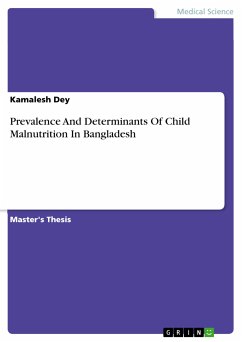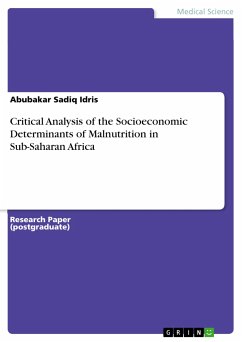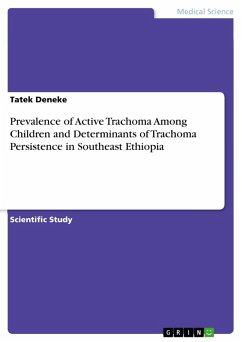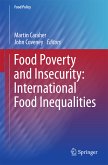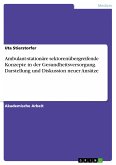Master's Thesis from the year 2015 in the subject Health - Public Health, , course: MSC IN PUBLIC HEALTH, language: English, abstract: Child malnutrition is the supreme concern of public health department in Bangladesh. Every two pre-school children are malnourished in Bangladesh. However, Bangladesh has achieved Millennium Development Goals (MDGs) 3 in the past years and MDG-4 is on track. Consequently, the rate of child malnutrition has reduced somewhat due to the improvement of both health care practice and policy system in Bangladesh in the period between in 1999 (56%) and in 2014 (43~36.8%). Aim The aim of the review study is to find out the prevalence and determinants of child malnutrition in Bangladesh. In addition, the review study will also help future researcher and health policy maker to modify existing nutrition policy through the various nutritional intervention programs in the community and school level to improve the nutritional status of children in Bangladesh. Methods The review study design conducted through the step-by-step systematic review protocol. The author searched relevant primary studies in numerous databases using Boolean operator in the period of February 2015 to July 2015. Eight primary studies met the inclusion criteria after using the screening strategy. In addition, data was collected from the selected eight primary studies and extracted onto the standard data extraction template. Afterwards, the EPHPP tool was used to appraise an individual studies to measure their quality grade. Finally, narrative synthesis was used to analyse data, while meta-analysis was not suitable. Results The review study included total eight primary studies and majority of the articles were cross-sectional studies and conducted in both school and community level. Where, six studies described both prevalence and determinants of child malnutrition in Bangladesh, while rest two studies simply identified the risk factors of child malnutrition. In addition, two prevalence studies reported that about 43% children were malnourished, while other prevalence studies reported that maximum 25% and 10% children were stunted and wasted respectively. Conclusion The review study concluded that about 43% malnourished, 39.5% stunted, and 14% wasting children living in Bangladesh. In addition, the review study also summarised that poverty, lack of exclusive breastfeeding, frequency of complementary feeding, food in-security, access to health care, parental education, occupation of parents, and presence of various infectious diseases are significantly associated with child malnutrition
Dieser Download kann aus rechtlichen Gründen nur mit Rechnungsadresse in A, B, BG, CY, CZ, D, DK, EW, E, FIN, F, GR, HR, H, IRL, I, LT, L, LR, M, NL, PL, P, R, S, SLO, SK ausgeliefert werden.

